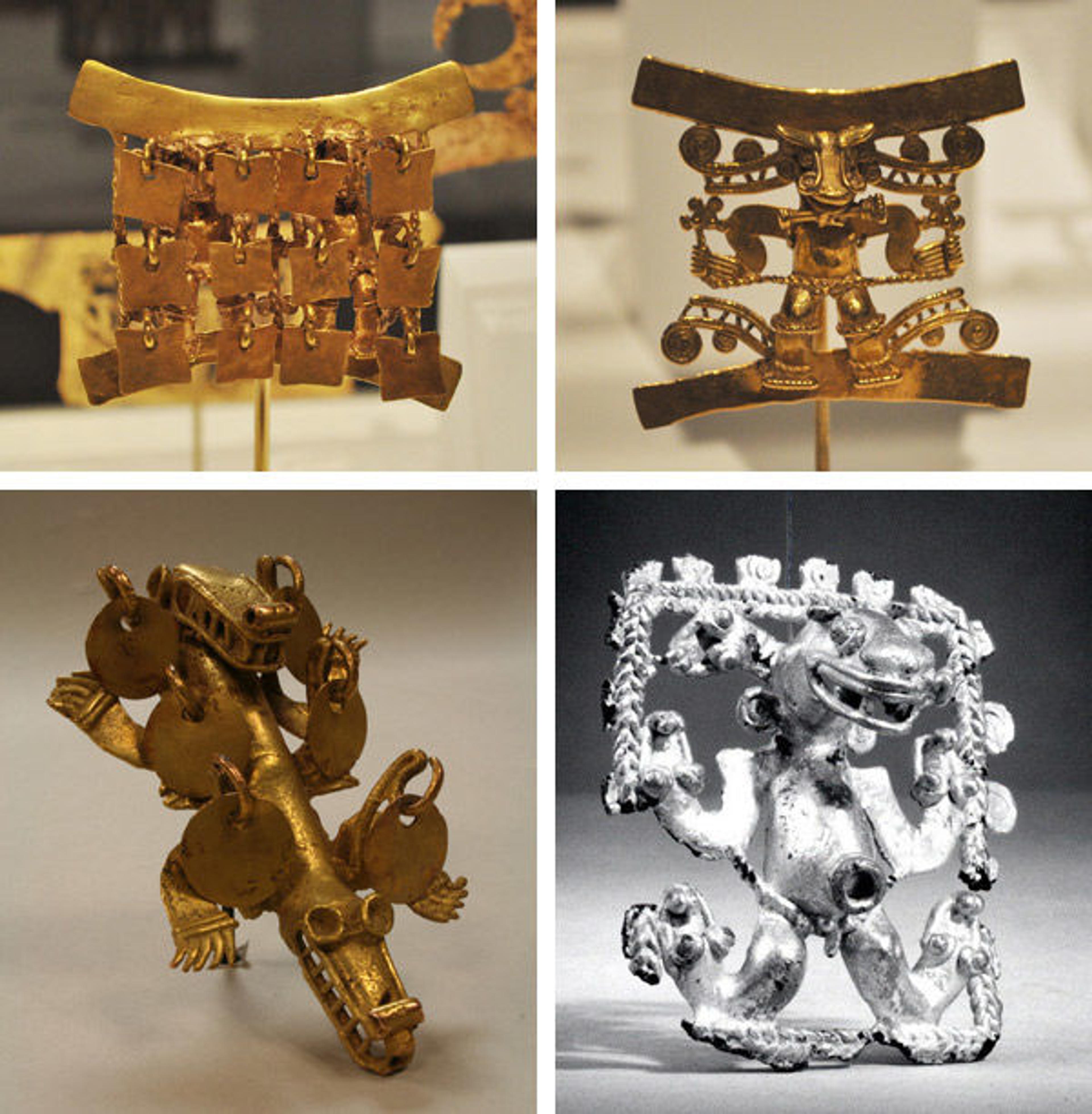A Stone Sphere from Costa Rica
«In June 2014 the United Nations Educational, Scientific, and Cultural Organization (UNESCO) named the "Precolumbian Chiefdom Settlements with Stone Spheres of the Diquís" to its World Heritage List, the first cultural site from Costa Rica to make the list of global heritage sites. The team from the Museo Nacional de Costa Rica, led by archaeologist Dr. Francisco Corrales Ulloa, nominated these sites as an "outstanding representation of the complex social, economic and political systems, as well as the refined cultural achievements, of chiefdom societies of the south Central American region during the pre-Columbian period a.d. 500–1500."»
The four sites included in the designation are Finca 6, Batambal, El Silencio, and Grijalba-2—all located in the low-lying deltas of the Diquís region in southeastern Costa Rica. This region is noteworthy for its concentration of Precolumbian settlements, identified by early explorers and collectors for its distinctive metallurgical traditions used in the production of striking pendants. Examples of Diquís-style pendants can be found in Met's collection, with several on view in Gallery 357.

Top left: Figure Pendant with Danglers, 13th–16th century. Costa Rica. Gold (cast); H. 3 5/8 x W. 4 x D. 1 1/8 in. (9.2 x 10.2 x 2.8 cm). The Metropolitan Museum of Art, New York, The Michael C. Rockefeller Memorial Collection, Bequest of Nelson A. Rockefeller, 1979 (1979.206.1003). Top right: Crocodile-Head Figure Pendant, 13th–16th century. Costa Rica. Gold (cast); H. 2 1/4 in. (5.72 cm). The Metropolitan Museum of Art, New York, Gift and Bequest of Alice K. Bache, 1966, 1977 (66.196.5). Bottom left: Double Crocodile Pendant, 13th–16th century. Costa Rica. Gold; H. 3 7/8 x W. 2 7/8 x D. 1 1/8 in. (9.8 x 7.3 x 2.8 cm). The Metropolitan Museum of Art, New York, The Michael C. Rockefeller Memorial Collection, Bequest of Nelson A. Rockefeller, 1979 (1979.206.734). Bottom right: Anthropomorphic Animal Pendant, 11th–16th century. Costa Rica or Panama. Gold alloy; H. 2 1/2 x W. 2 1/2 x D. 1 in. (6.4 x 6.4 x 2.5 cm). The Metropolitan Museum of Art, New York, The Michael C. Rockefeller Memorial Collection, Bequest of Nelson A. Rockefeller, 1979 (1979.206.1162)
Furthermore, investigation at the four designated sites, among others, yielded a large number of spherical stone sculptures. Hundreds of these petrospheres are known in Costa Rica, varying from handheld-sized to over two meters (six feet) in diameter. Early archaeological work in the region by Doris Stone (1943), Samuel Lothrop (1963), and others was prompted by the development of the area for the United Fruit Company's banana plantations.
![[Stone] Plate IV, from Doris Z. Stone's "A Preliminary Investigation of the Flood Plain of the Rio Grande de Térraba, Costa Rica." American Antiquity, Vol. 9, No. 1 (July 1943)](https://cdn.sanity.io/images/cctd4ker/production/d0a10ddb536e9e92187a990a9ab3c15e0a92faa2-600x1023.jpg?w=3840&q=75&fit=clip&auto=format)
Plate IV from Doris Stone's "A Preliminary Investigation of the Flood Plain of the Rio Grande de Térraba, Costa Rica." American Antiquity, Vol. 9, No. 1 (July 1943)
Precolumbian residents of the Diquís created large, stone-lined platforms where modern researchers not only noted concentrations of the stone spheres, but also found groupings of spheres where no mounds were visible. At Finca 6 in particular, recent research by Corrales and his Costa Rican archaeologist colleagues uncovered spheres on either side of the entrance to a ramp leading to one of the major structures at the site. Costa Rican researcher Ifigenia Quintanilla has also documented the "drama de las esferas" (drama of the spheres) in recent years to clarify the spatial distribution, production, and function of these monuments.
The stone spheres are most often constructed from igneous rocks common to the area. Precolumbian artisans often obtained the source stone quite far from their intended destination, implying the work of a large team of individuals. With no metal tools, craftspeople pecked and ground away the surface with stone implements to create the perfect spheres that have captured the imagination of Costa Ricans and the global public. The cultural and symbolic significance of the spheres is not well understood; clearly, these monumental sculptures were prestige objects that marked the landscape around the ancient Diquís communities for residents and visitors alike to behold with awe.
In 2012 the Metropolitan Museum acquired a stone sphere, 66 cm (26 in.) in diameter and weighing 385 kg (850 lbs.), a gift of the Austen-Stokes Ancient Americas Foundation. Possibly from this region of Costa Rica, the object is a superb example of the artistic skill and vision of the Precolumbian sculptors who created it. A close examination at the time of donation determined that the sphere was made of andesitic rock.

Top: Display case in Gallery 357 containing the Costa Rican stone sphere. Bottom: Detail view of the sphere's andesitic rock. Photographs by James Doyle
The sphere was acquired by Belgian art connoisseur Emile Deletaille in the late 1960s from an American art dealer, Harvey Menist, who had a gallery in Amsterdam. It remained with Deletaille in Brussels and later New York until it was acquired by the Austen-Stokes Ancient Americas Foundation in 2008. Since its arrival at the Museum, the sphere resides at he northwest corner of Gallery 357, in the alcove of materials from ancient Costa Rica. Visitors to that gallery can also appreciate the fine craftsmanship of Precolumbian sculptures in both volcanic rock and jade.
Additional Reading
Lothrop, Samuel K. "Archaeology of the Diquís Delta, Costa Rica, Vol. 51." Cambridge: Papers of the Peabody Museum of Archaeology and Ethnology, Harvard University, 1963.
Quintanilla, Ifigenia. Esferas precolombinas de Costa Rica. San José, Costa Rica: Fundación Museos del Banco Central de Costa Rica, 2007.
Stone, Doris Z. "A Preliminary Investigation of the Flood Plain of the Rio Grande de Térraba, Costa Rica." American Antiquity, Vol. 9, No. 1 (July 1943): 74–88.
James Doyle
James Doyle is an assistant curator in the Department of the Arts of Africa, Oceania, and the Americas.
Follow James on Twitter: @JamesDoyleMet